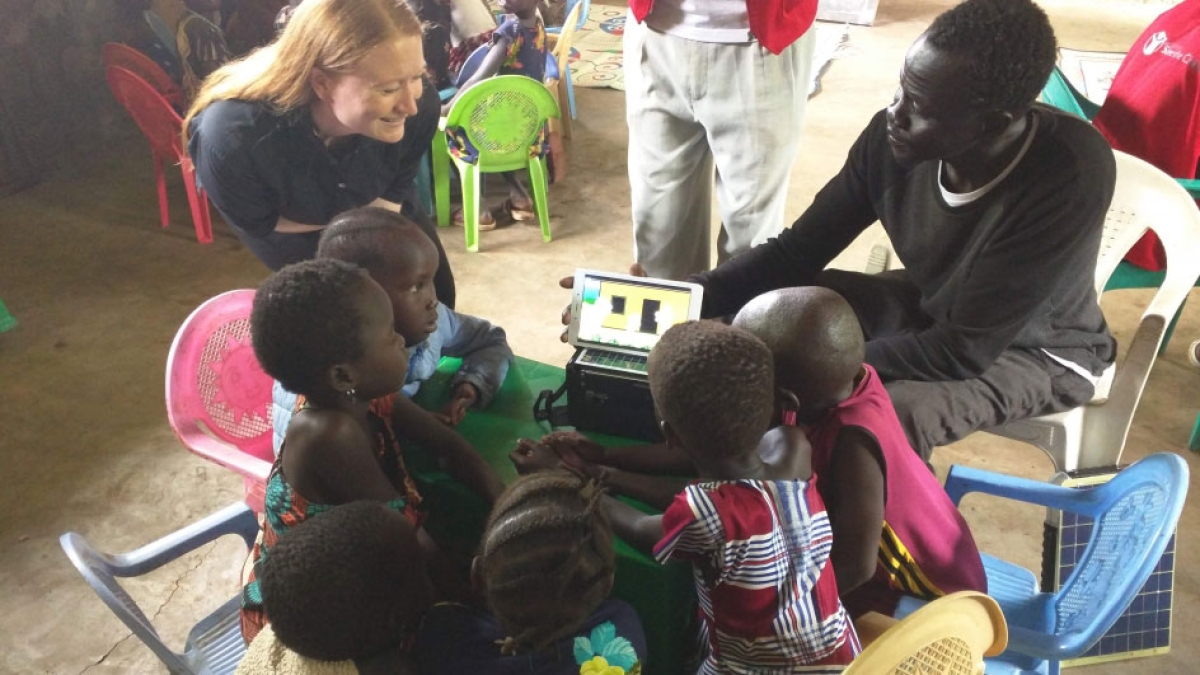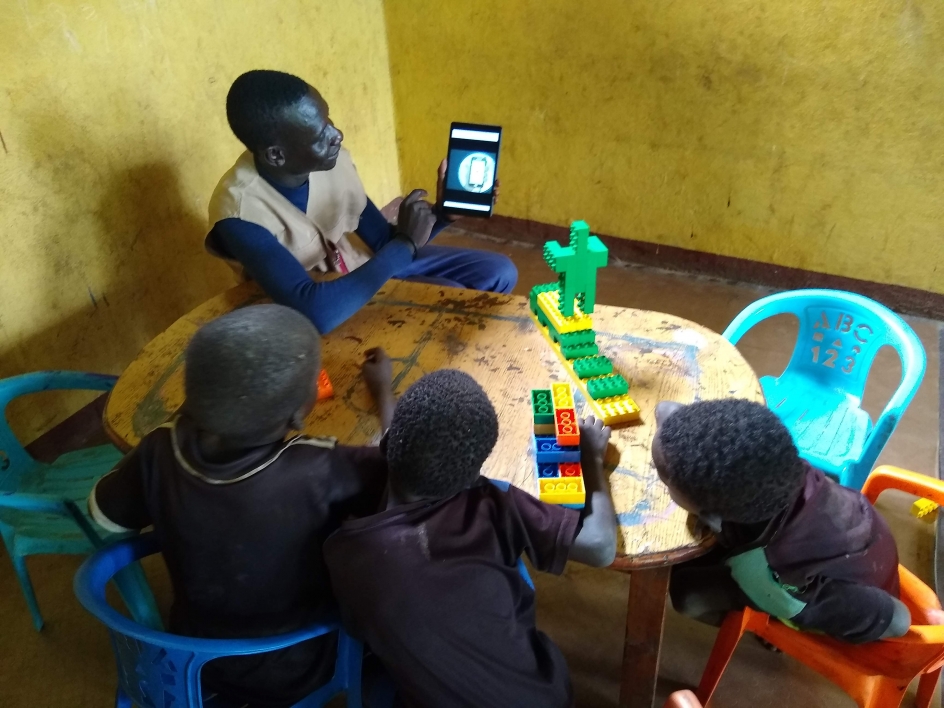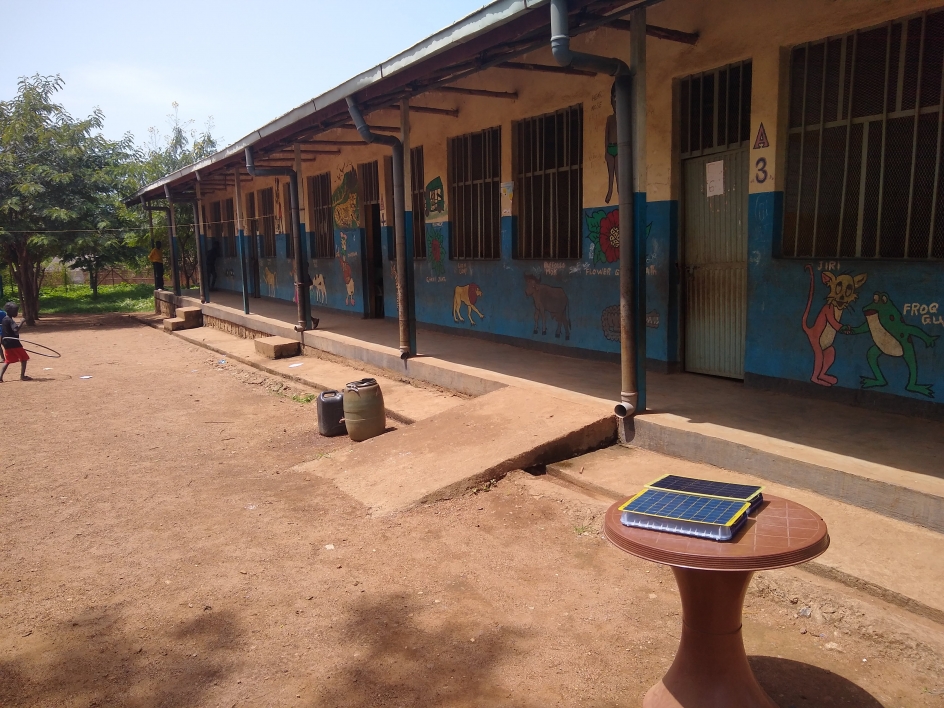With minimal training and a severe lack of resources, teachers in refugee camps are still working to educate children, even as they all deal with violent displacement and a global pandemic.
That monumental task is now a little easier for a group of South Sudanese educators in four refugee camps in Ethiopia, thanks to efforts by Arizona State University.
Last month, a team from ASU visited primary schools and early childhood education centers in the camps to check on the progress of a project that sent 60 SolarSPELL devices to help teachers conduct lessons in their native Nuer language.
SolarSPELLSolarSPELL stands for Solar Powered Educational Learning Library. is a solar-powered portable library filled with educational content that was created by Laura Hosman, an associate professor in the School for the Future of Innovation in Society at ASU, who was on the team that visited the camps.
“It was very well received by the teachers, and they were so excited by it,” she said.
“We had teachers saying that SolarSPELL can fill in gaps because many of the teachers are refugees who never got the opportunity to get a degree or be certified to teach.
“SolarSPELL was one tool in the toolkit for helping to make sure that learning was continuing to take place during the pandemic, when school was out.”
SolarSPELL devices are simple, and the parts cost less than $200. Each case includes a small solar panel, a microcomputer and a micro digital memory card, which contains all of the library content and some code that allows it to be accessed by any type of browser. The device creates a Wi-Fi hot spot, so no electricity or internet connection is needed. Users connect any Wi-Fi capable device, such as smartphones, tablets or laptops, to access and download the content.
The libraries are filled with lessons that are customized to the local community’s needs.
Nearly 500 devices are now being used in remote locations in 10 countries, and last year, they became part of a teacher-training initiative with the Peace Corps.
The project in Ethiopia, the first for SolarSPELL in that country, was through a partnership between ASU’s Education for Humanity and the United Nations High Council on Refugees, Save the Children Ethiopia and Plan International Ethiopia, with funding from the LEGO Foundation.
The project to provide SolarSPELL digital libraries to the South Sudanese families in the Ethiopian refugee camps was funded by the LEGO Foundation, which also provided LEGO toy bricks to the children as part of a "learn-through-play" initiative. Photo courtesy of Laura Hosman
The South Sudanese people have fled to neighboring countries to escape civil conflict in their own country, and the camps include refugees from Somalia and Eritrea, as well.
ASU has collaborated with the U.N. High Commission on Refugees in 14 countries, according to Matthew Gallagher, the senior research and evaluation specialist for the Education for Humanity initiative at ASU, which works to deliver higher education learning to refugees and marginalized populations through technology.
“So they reached out to us to serve as a key implementing partner for the project,” he said.
As always, the project started with collaboration with the local population.
“We conducted interviews before the project started with a small subset of teachers in the Gambella and Assosa refugee camps,” Gallagher said.
“One of the topics we discussed was the types of technology and resources the teachers used to prepare and deliver their daily lessons. The teachers all answered the question the same way: ‘We have a textbook, a blackboard and some chalk.’ The extent of the teachers’ resource gap was startling.”
The school administrators estimated that they had one textbook for every 10 students.
“So to put the SolarSPELL devices and a tablet in the teachers’ hands, and to show them that they now had lesson plans, teacher guides, digitized textbooks from the national curriculum and over 30,000 other resources to enrich their lessons, it was just simply a joy to watch as each teacher realized the extent of the possibilities that these resources provided them,” he said.
During the visit, the ASU team updated the content in the libraries to add lessons in math, English and Ethiopian folktales to teach reading. Teachers and parents saw improvements in students’ motivation to attend school, their involvement in lessons and their knowledge retention after using the SolarSPELL devices.
Getting the libraries to the teachers in the camps required the team to overcome huge challenges.
SolarSPELL already addresses some of the major roadblocks in using technology in remote locations because it doesn’t require internet access or electricity. But in Ethiopia, there were other challenges as well, Gallagher said.
“In the design phase, we needed to make sure that the main learning materials we created were all translated into Nuer, which is the main language spoken by the refugee population we worked with,” he said.
The content also needed to be contextualized, so the lessons made sense to the teachers and students in the camps. And the team needed to work with the Ethiopian government, which wanted assurances that the lessons supported the national curriculum.
The teachers had never used technology in their classrooms, so they needed to be trained. Hosman said that the pandemic required the training to be on Zoom, which was less than ideal.
Getting the devices to where they needed to be was also difficult, Gallagher said.
“We needed to navigate the logistics of moving 60 SolarSPELLs from ASU Tempe campus halfway across the globe, through Ethiopian customs, and to refugee camps nestled in a remote corner along the border of South Sudan,” he said.
“We needed to formalize a device safety and security plan, as school administrators feared they would be broken by untrained teachers or stolen by community members.”
Despite the challenges, which included ongoing disruptions from unrest around the camps, Hosman is excited about the results.
“What I take away from this is the excitement I saw in every school from every teacher who used SolarSPELL, and I know there is a lot of potential there,” said Hosman, who also is an associate professor in The Polytechnic School in the Ira A. Fulton Schools of Engineering and a senior sustainability scientist in the Global Institute of Sustainability and Innovation.
Hosman was inspired to create SolarSPELL several years ago, when she visited teachers in remote schools in the Caribbean and Pacific islands who had been handed tablets and laptops with no training and no access to the internet or even electricity.
So in 2015, she challenged her engineering students to create a solar-powered library that would fit into a backpack; be resistant to rain, humidity, sand and heat; and work in communities that have limited or no internet connectivity.
A SolarSPELL digital library charges in the sunlight outside a school in one of the refugee camps. The devices were loaded with lessons in the Nuer language, spoken by the South Sudanese residents of the camps. Photo courtesy of Laura Hosman
Hosman said that SolarSPELL is seeking funding to expand the teacher-training component of the Ethiopia project.
In addition, the team is working on Arabic and Kurdish language content so the devices can be distributed to refugees in other parts of the world.
Gallagher said that that in the last five years, ASU has become recognized as a leader in the humanitarian space and has cultivated relationships with the United Nations, government ministries, nongovernmental partners and refugee-led organizations around the world.
“This project is a direct result of the investment that ASU has made to extend education opportunities to marginalized groups in low-resource environments around the world,” he said.
“Still, there remains an overwhelming need for further support and advocacy, and ASU is well-placed to increase our presence in the field and better meet the educational needs and rights of refugees worldwide.”
Top image: Laura Hosman, an associate professor in the School for the Future of Innovation in Society at ASU and creator of the SolarSPELL solar-powered digital library device, watches as a teacher in a refugee camp uses the device to teach young children. Photo courtesy of Laura Hosman
More Science and technology

Swarm science: Oral bacteria move in waves to spread and survive
Swarming behaviors appear everywhere in nature — from schools of fish darting in synchrony to locusts sweeping across landscapes in coordinated waves. On winter evenings, just before dusk, hundreds…

Stuck at the airport and we love it #not
Airports don’t bring out the best in people.Ten years ago, Ashwin Rajadesingan was traveling and had that thought. Today, he is an assistant professor at the University of Texas at Austin, but back…

ASU in position to accelerate collaboration between space, semiconductor industries
More than 200 academic, business and government leaders in the space industry converged in Tempe March 19–20 for the third annual Arizona Space Summit, a statewide effort designed to elevate…




